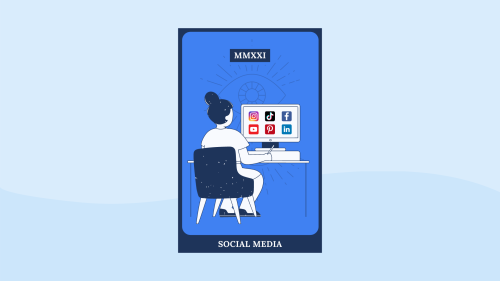Businesses and organizations face fierce competition and rapidly changing trends. Keeping up with these trends is essential to stay relevant and competitive. Trend analysis through media monitoring tools offers valuable insights that enable businesses to make informed decisions and refine their strategies.
Read Creating a Marketing Strategy that Works: Benefits, Steps, Tools
We’ll explore how professionals can use media monitoring tools to analyze trends related to hashtags, content, and campaigns. Through real-world examples, we’ll demonstrate how trend analysis can provide businesses with actionable insights to achieve their goals.

Trend analysis example for hashtags
One area where trend analysis using a media monitoring tool can be particularly effective is in tracking hashtags.
Hashtags can increase brand visibility, drive engagement, and encourage user-generated content. Media monitoring tools can be used to track the performance of hashtags across owned and earned platforms.
Owned platforms refer to channels directly managed by the brand, such as its social media accounts. In contrast, earned platforms refer to channels outside the brand’s control, such as user-generated content. By tracking the performance of hashtags, businesses can identify which ones generate the most engagement and adjust their strategy accordingly.
Read The Ultimate Guide to Hashtag Analytics
For example, a company might use a tool to identify a popular and relevant hashtag related to their industry. Then, they can incorporate it into their social media content. By leveraging the trending hashtag, they could increase their reach and engagement, increasing brand awareness and sales.
However, a company might be tempted to generate hashtags for certain campaigns. Although, these might not match the ones their audience is usually inclined to use. That’s why monitoring how your audience uses hashtags and regularly tracking earned hashtags is important.
Starbucks’ Employees Union Crisis
Last week, Howard Schultz, former Starbucks CEO, testified before a Senate committee about labor practices. Senator Bernie Sanders accused Starbucks of breaking the law, and Schultz for anti-union activities. Despite NLRB findings, Schultz denied breaking the law. The NLRB recently found that Starbucks engaged in misconduct to prevent unionization. Over 300 stores have unionized since December 2021, and shareholders voted to assess worker rights.
How is this reflected in their online reputation?
Despite the negative attention Starbucks has received in the media, its online channels do not reflect the public’s sentiment. Many people are outraged at the coffee giant for the way they treated its employees. Additionally, they judged their lack of transparency in their corporate practices. There is even a petition circulating online calling for a boycott of the company, which has already collected almost 10,000 signatures. The petition has gained traction on social media, with celebrities like Mark Ruffalo tweeting about it.
Our media monitoring tool has observed a significant discrepancy between the earned media, dominated by negative coverage of Starbucks, and the owned media, which seems to be business as usual.
While Starbucks’ social media accounts continue to promote their products and specials, the public’s anger towards the company is not being addressed. This discrepancy between earned and owned media highlights the importance of companies being responsive and transparent to public opinion, especially in times of crisis. This trend analysis example showcases how ignoring the public’s concerns can further damage a company’s reputation and alienate customers.
Trend analysis example for content
Another area where trend analysis through a media monitoring tool can be useful is in analyzing the performance of your content on social media.
Media monitoring tools can be used to track metrics such as engagement, sentiment, and share of voice. For instance, a company may use a media monitoring tool to track the engagement levels of its social media content over time.
By identifying which pieces of content resonate with their audience and which are not, the company can adjust its content strategy to increase engagement.

For example, if the tool reveals that posts that feature behind-the-scenes glimpses of the company’s operations receive higher engagement, the company may adjust its content strategy to incorporate more of these posts. By using trend analysis to refine its social media content strategy, the company can achieve higher levels of engagement, reach, and, ultimately, sales.
Additionally, trend analysis through social media tracking can provide businesses with valuable insights into their audience’s interests and preferences, which can be used to inform content creation.
Beauty Products
One of the best examples of how businesses can leverage trend analysis through social media tracking is by using a feature like the “word cloud.” This powerful feature allows businesses to track trends by entering a keyword and identifying related broader topics. By doing so, companies can detect other keywords and phrases commonly associated with the topic they are searching for.
For example, one of our clients, which is a beauty company, was launching a Vitamin C serum. They used the word cloud to identify other products or ingredients commonly associated with Vitamin C. By using trend analysis, they could identify that their target audience is also interested in SPF, so they can create content around this topic to engage with their audience.

By analyzing trends in this way, businesses can gain valuable insights into their audience’s interests and preferences. They can use this knowledge to create highly targeted content that resonates with their audience and drives engagement.
For instance, the beauty company could use its trend analysis to create social media posts, blog articles, or even influencer collaborations that emphasize the importance of SPF when using a Vitamin C serum. This trend analysis example shows how they can create content that resonates with their audience and establish themselves as experts in their field.
Trend analysis example for campaigns
A media monitoring tool can also be used to track the performance of social media campaigns. By monitoring metrics such as engagement rates, reach, and sentiment analysis, businesses can gain valuable insights into the effectiveness of their campaigns. Using trend analysis, companies can identify patterns and trends in their campaign’s performance over time, allowing them to adjust their strategy and improve results.
For example, a sports brand might use a media monitoring tool to track the performance of a social media campaign promoting its new line of sneakers. By analyzing engagement rates and sentiment analysis, they could identify that their target audience responded positively to content that featured images of athletes wearing sneakers while participating in different sports. They could also identify that posts featuring lifestyle images of the sneakers did not perform as well. Armed with this knowledge, the sports brand could adjust its campaign strategy to focus on featuring athletes wearing the sneakers and participating in various sports, leading to improved engagement and higher sales.
Dove’s #TurnYourBack campaign
On Tuesday, March 7, Dove called on its global community to #TurnYourBack to the trending Bold Glamour filter. The harmful filter had been sweeping social channels, with content creators calling out its dangers.
Dove invited everyone to join them in taking a stand as part of its ongoing commitment to #NoDigitalDistortion in its advertising or marketing.
As a result of Dove’s efforts and the support of its audience, many participated in the #TurnYourBack campaign, raising awareness about the harmful effects of digital distortion in advertising and marketing. The public has been widely criticizing The Bold Glamour filter, and many companies have pledged to follow Dove’s example and refrain from using digital distortion in their promotions.
Dove can track the performance of its #TurnYourBack campaign using a media monitoring tool, allowing them to analyze the trend and expand the campaign based on the words people have used when mentioning it.
By analyzing the word cloud generated by the media monitoring tool, Dove can identify the keywords people have used most when mentioning the #TurnYourBack campaign. This can help them determine the most effective messaging and language in future communications and identify any issues or concerns people have raised about the campaign.
Another metric that Dove can use to track the campaign’s performance is sentiment analysis. Sentiment analysis categorizes the attitudes and opinions expressed in social media posts and other online content. Using sentiment analysis, Dove can identify whether the sentiment towards the #TurnYourBack campaign is positive, negative, or neutral. This trend analysis example shows how Dove can assess how well the public is receiving the campaign and to make adjustments as necessary to ensure its success.
To sum up
In conclusion, media monitoring tools offer valuable insights. It keeps businesses and organizations competitive by keeping up with rapidly changing trends.
Trend analysis through media monitoring tools can provide businesses with actionable insights. This way, they can refine their strategies, achieve goals and improve their social media presence. Mentioned trend analysis examples demonstrate how businesses can leverage media monitoring tools to track hashtags, content, and campaigns.
By analyzing trends, businesses can identify what resonates with their audience and create highly targeted content that drives engagement. The Starbucks employee union crisis and the beauty company’s Vitamin C serum launch trend analysis examples demonstrate how businesses can leverage media monitoring tools to detect public sentiment, identify target audience interests and create content that addresses their preferences.
Therefore, incorporating trend analysis into their media monitoring strategies is essential for businesses and organizations to stay relevant and competitive.
If you’d like to try out media monitoring yourself, we’d be happy to show you the potential.






